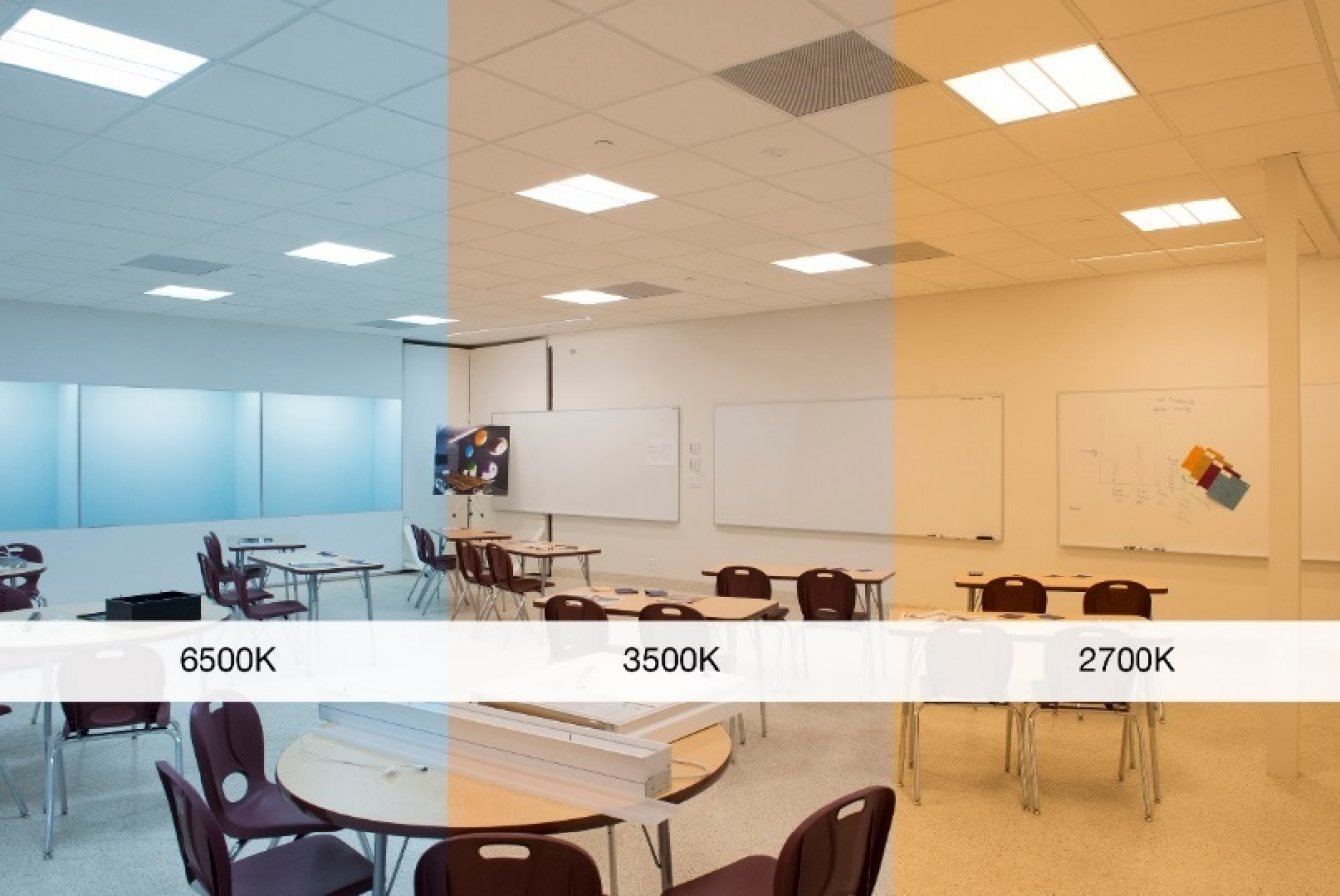
Energy costs for lighting are a large operational expense for schools and universities, but past energy-conservation strategies for classroom lighting have typically reduced lighting quality while not addressing opportunities for increasing student engagement and teacher satisfaction. With the help of DOE funding, RTI International and Finelite have developed and tested an LED-based next-generation integrated classroom lighting system that makes it easy for teachers to control light levels and chromaticity (the color of the light) in three classroom zones. The lighting system also incorporates daylight harvesting to further reduce energy consumption. One of the objectives of this project was to spur demand for energy efficient lighting in schools by demonstrating some of the potential non-energy benefits of easy-to-control tunable lighting in future classrooms.
Together with sensors and a controller, the fixtures form a made-in-USA system operated from a user interface that’s either mounted in the front of a classroom or accessed through a wireless handheld device. The design of the user interface for the controller was based on the input from more than 80 teachers and school administrators. Among the project’s achievements:
- Continuous tunable white light ranging in color between warm white (2700K) and cool white (6500K), delivered at a luminous efficacy > 125 lm/W at all CCT values. According to the developers, this level of performance represents more than a 25% improvement in energy efficiency over fixed-CCT fluorescent lights, and better than a 22% improvement over the average fixed-CCT LED luminaires listed in the LED Lighting Facts® database.
- Integrated sensors that can harvest daylight in the classroom and selectively dim luminaires to maintain a constant lighting level – thus further reducing energy consumption.
- LED light sources that can last for more than 10 years of typical use, with < 15% decrease in light output. In contrast, conventional fluorescent lighting technologies require replacement every three to five years.
- A simple, energy-efficient, glare-free lighting system that’s easy to install, conforms to all applicable building and electrical standards, and meets or exceeds all DOE goals for system-level performance in the “classroom of the future,” including luminous efficacy, color rendering, vertical and horizontal illuminance, and product reliability.
The project will provide a domestically designed and built lighting solution that is targeted to improve the educational environment by providing better classroom lighting for U.S. students and teachers. In addition to tackling key technological issues, keeping fixture costs low, and providing a user interface that balances flexibility with ease of operation, the project also aims to achieve rapid commercialization, which will foster job creation in the U.S. for manufacturing and installing this new lighting system. (June 2017)
